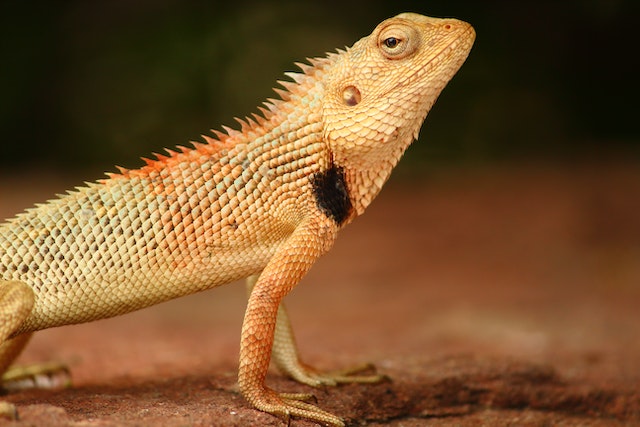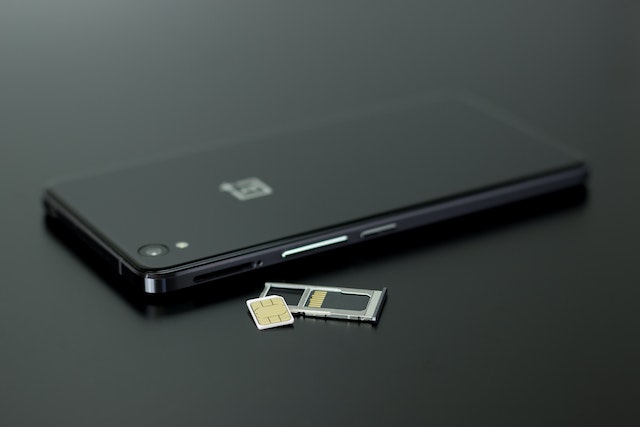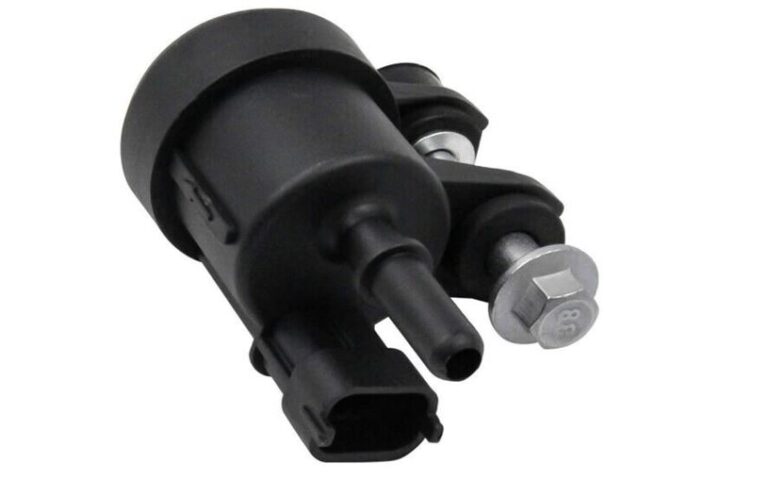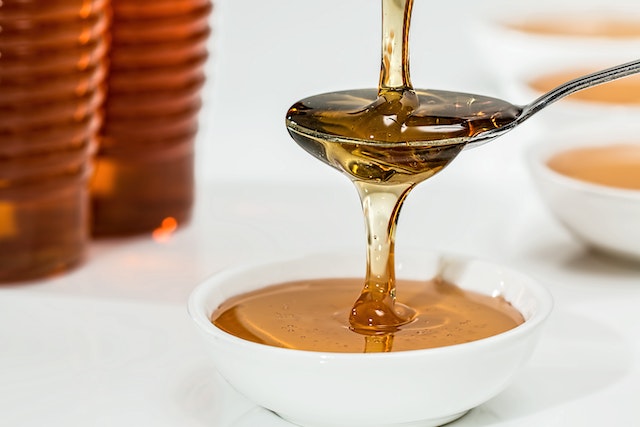How To Clean A Bearded Dragon
In addition to their docile nature and stunning appearance, bearded dragons make fascinating pets for their fascinating appearance and docile nature. In order to keep your bearded dragon in good health, it is important that you play a part in keeping him or her clean. There is nothing more important than regular cleaning and maintenance if you want your pets to be healthy and live a long time.
There are several essential tasks that must be completed in order to clean a bearded dragon, including maintaining its habitat, cleaning its enclosure, and bathing it. When you follow proper cleaning practices, your pet’s environment will be free from waste, bacteria, and parasites and your pet will be able to live in a healthy environment.
If you’re new to bearded dragon ownership, or just want to know more about the cleaning process of your bearded dragon, you’ve come to the right place. You will find detailed instructions in the following guide on how to effectively clean a bearded dragon and how to do that step by step. Following these guidelines will help you keep your pet’s environment clean and comfortable, which will help your pet feel safe and secure.
How To Clean A Bearded Dragon Cage
It is very important to clean a bearded dragon cage on a regular basis in order to ensure that your pet remains healthy and comfortable. To help you with cleaning your bearded dragon’s cage, here is a step-by-step guide on how to do it:
-
Prepare the cleaning supplies: Before you get started, make sure that you have gathered all of the necessary cleaning supplies. To wash the bearded dragon, you will need warm water, a mild reptile-safe cleaner or disinfectant, a soft brush or sponge, paper towels or a clean cloth, as well as a container to hold the bearded dragon during the process of cleaning.
-
Remove the bearded dragon: The bearded dragon needs to be carefully removed from its cage and placed into a safe and secure container with a lid to prevent it from escaping.
-
Empty and dispose of substrate: You should remove any loose substrate, such as reptile carpets or paper towels, that you are using so that it can be disposed of in the proper garbage bin. You will need to clean any waste and debris that may be present on the surface of a solid substrate.
-
Remove cage accessories: It is important to remove all the cage accessories from the cage, such as branches, rocks, and hiding spots. Make sure to clean each of them separately, using a method that is appropriate for the material that they are made of.
-
Clean the cage interior: The interior surfaces of the cage should be cleaned by wiping them down with warm water and a mild disinfectant or cleaner that is safe for reptiles. Take special care to take care of areas such as corners and crevices that might have accumulated waste or bacteria over time. It is a good idea to scrub away any stubborn debris with a soft brush or sponge. If you have a bearded dragon, make sure to avoid using harsh chemicals or cleaners that could be toxic to your pet.
-
Rinse the cage: Once the cage has been cleaned, make sure to rinse it thoroughly with clean water to remove any residue that may have been left behind by the cleaning solution. Ensure that nothing is left behind in the form of soap or disinfectant after the task has been completed.
-
Dry the cage: In order to ensure that the cage interior is completely dry, use a clean cloth or paper towels. To prevent mold or bacteria from growing, it is important to remove any moisture that may be present in the environment.
-
Clean and disinfect cage accessories: It is important that the cage accessories, such as branches and rocks, are cleaned according to the material they are made from. The best way to clean them would be to scrub them with warm water and mild soap, or to use a disinfectant that is suitable for reptiles. Before putting them back in the cage, make sure that you give them a thorough rinse and let them air dry completely.
-
Replace the substrate: If there is any loose surface, such as reptile carpet or paper towels, which is being used as a substrate, it needs to be replaced with fresh and clean materials. The substrate of your bearded dragon should be suitable for its needs and easy to clean so that he will be able to thrive.
-
Return the bearded dragon to the cage: Once you have completely dried the cage and cleaned all the accessories, it is time to place your bearded dragon back in the fresh and clean habitat that it came from.
-
Wash your hands: To maintain proper hygiene, make sure you clean your hands thoroughly with soap and water after handling the cage and cleaning materials.
In order to keep the bearded dragon cage clean, it is important to establish a regular cleaning routine, with spot cleaning performed as needed and a deeper cleaning conducted at least once every month, depending on the need. By maintaining a regular cleaning schedule, you can prevent the buildup of waste, bacteria, and odors, which will help your bearded dragon live a healthier, more comfortable life.
How To Clean A Bearded Dragon’S Eye
It is a delicate process to clean a bearded dragon’s eye, which requires a lot of expertise in order to make sure that the pet is safe and well taken care of. To begin, you will need the necessary supplies, such as a soft cloth or cotton ball, warm water, and a soft cloth for wiping away the dirt. The best way to ensure your bearded dragon stays comfortable during the cleaning process is by creating a comfortable environment for him. In order to handle your pet without distractions, you need to find a quiet and calm area in which you can do so. To assess the severity of the issue, you should hold the affected eye firmly in your hand while you carefully examine it. In addition to looking for debris, crusts, or discharges, you should also check for any crevices. The best thing to do is to seek the advice of an experienced veterinarian in case the problem persists or seems severe despite the cleaning, in order to ensure proper diagnosis and treatment for the animal.
A soft cloth or cotton ball can be used to clean the bearded dragon’s eye by soaking it in warm water for a few minutes. In order to avoid discomfort, make sure that the water is not too hot. From the outer corner toward the center of the affected eye, glide your hands gently around the affected area, wiping it gently with a gentle touch. If there is any debris or discharge on the skin, you should use soft and slow strokes to remove it. It is important that you avoid rubbing the eye directly or applying excessive pressure to the eye, as this may cause it to become more irritated. Alternatively, you can repeat this process by dipping a cloth or cotton ball into warm water and gently wiping it again after it has been soaked. It is important that you take your time and be patient in order to ensure a thorough cleaning.
When the cleaning is complete, pat the eye area gently with a towel or tissue once the area has been cleaned. To ensure that any additional irritants are not brought into contact with the eye, it is vital to use a clean and dry towel before applying your eye drops. In order to ensure the safety of your bearded dragon throughout the entire process, it is important that you handle it carefully at all times. As long as you maintain good hygiene and carefully clean the eyes of your bearded dragon on a regular basis, you will be able to reduce the chances of discomfort and potential eye infections. If you have any concerns regarding your pet’s eye health, please don’t hesitate to seek professional advice or observe your pet’s eye health regularly.
How To Clean A Bearded Dragon Nose
It is important to use a gentle touch and a cautious approach when cleaning a bearded dragon’s nose to ensure your pet’s well-being. In order to prepare your bearded dragon for a peaceful and comfortable environment, you need to find a quiet, non-disturbing area where your bearded dragon is safe and comfortable. In order to prevent sudden movements of your pet, you need to keep a firm hold of them at all times. Inspect your nose carefully for signs of mucus that has built up, crust that has formed, or obstructions that have developed. It is best to seek advice from a veterinarian if you have noticed any persistent or unusual nasal issues.
A soft cloth or cotton ball can be dampened with warm water so that it can be used to clean the bearded dragon’s nose. In order to avoid discomfort, you should ensure that the water is not too hot. You should use a soft and slow motion when wiping around the nostrils in a gentle way. Take your time when handling your pet and ensure that you are patient, ensuring that you do not apply too much pressure to them or cause them any stress. As a result of this procedure, any visible mucus or crusts should be removed.
In the event that the nose needs to be cleaned again, dampen a cloth or cotton ball in warm water and gently wipe the nose. Repeat the process as necessary. The next step may need to be performed if the initial wipe hasn’t removed all of the mucus or crust that has remained. During all stages of the process, it is essential that your pet’s comfort and well-being is prioritized.
After cleaning the nose area, pat the area gently with a towel or tissue after using a separate one. The materials used for drying should be clean in order to prevent the introduction of any irritants into the drying process. A bearded dragon’s nasal health should be observed regularly, and if you notice any issues or have any concerns, you should consult a veterinarian for further evaluation and guidance if any concerns arise. Keeping your bearded dragon healthy and comfortable is as simple as maintaining good hygiene and addressing any nasal issues that may arise as soon as possible.
Soap Is Harmful To Bearded Dragons
There is a great deal of sensitivity on the skin of bearded dragons. There is no doubt that soaps that humans use in their typical household environments are not designed to be used on sensitive skin like that of reptiles. Some soaps contain harsh chemical detergents that can be very harsh on the skin of bearded dragons, especially if they are used in large quantities.
A typical soap is made up of chemicals that can cause irritation, burns, and abrasions. It is important to note that if none of these problems are addressed, they can persist and even become fatal. In addition, soap can also cause internal health issues for your bearded dragon if it soaks into their skin. The use of Dawn dish soap has even been warned against by veterinarians. It is important to note that, despite Dawn’s marketing campaign claiming that it is safe for babies, the product is in no way safe for bearded dragons. In the wild, lizards are not allowed to use soap, and they are not allowed to use soap in captivity either.
There should never be any reason for you to use soap to help clean your dragon, regardless of whether it is shedding or dirty.
When kept happy and healthy, bearded dragons are capable of living for quite a long time, however they are also very sensitive animals. The smallest changes to the bearded dragon’s environment or chemical balance can trigger a health spiral which can leave you feeling sad and confused when the bearded dragon becomes ill as a result of changes to their environment or chemical balance. Bearded dragons can remain healthier on the long run if their environment is kept stable, and they are not exposed to household cleaners or cleaning chemicals.
Frequently Asked Questions
Q: How often should I clean my bearded dragon?
A: When it comes to caring for your bearded dragon, it is extremely important to maintain a clean and hygienic environment. There should be a spot cleaning done every day in order to remove any waste or soiled areas within the enclosure. At least once a month, the tank should be thoroughly cleaned with a mixture of bleach and water.
Q: How do I clean the bearded dragon’s tank?
A: If you are going to clean your bearded dragon’s tank, the first thing you should do is to remove your pet and all of his accessories from the enclosure. Make sure that all waste and soiled substrates are disposed of properly. Make certain that the interior surfaces of the aquarium are clean by using warm water and a mild cleanser that is safe for reptiles. In order to place clean accessories and substrate back inside the tank, it is necessary to thoroughly rinse the tank and dry it.
Q: Can I use household cleaning products to clean the tank?
A: No, it is not recommended that you use household cleaning products as these may contain chemicals that could be harmful for your bearded dragon. The best option is to use a mild reptile-safe cleaner or disinfectant that is specifically designed to be safe for reptile enclosures.
Q: How do I clean the bearded dragon’s accessories?
A: The accessories such as rocks, branches, and hides that are part of the tank should be cleaned separately from the tank itself. It is best to use warm water and a mild soap or a disinfectant that is safe for reptiles when disinfecting. Ensure that all debris and bacteria are removed from the skin by gently scrubbing it. Then you can place them back into the tank after making sure they have been rinsed thoroughly and allowed to air dry completely.
Q: How should I clean the bearded dragon’s food and water dishes?
A: Dishes used for food, water, and drinks should be washed regularly by using warm water and mild soap. If there are any leftover foods or debris on them, scrub them gently to remove them. Ensure that they have been thoroughly rinsed before refilling them to remove any soap residue that might remain.
Q: How do I clean the bearded dragon’s skin?
A: The bearded dragon naturally sheds its skin as it grows in size. In order to help ease the shedding process, you can provide your horse with a moist hide box, which helps in maintaining the skin’s moisture and helps in easing the shedding process. The easiest way to loosen a stuck shed is to gently mist your bearded dragon with water or use a warm, damp cloth to help loosen the skin on them.
Q: Are there any special considerations for cleaning a baby bearded dragon?
A: During the cleaning process, baby bearded dragons need to be given extra care and attention. Be sure that the cleaning methods and products you are using are safe for their delicate skin, as they can cause irritation. It is recommended that you do not use harsh chemicals or scrub the surface excessively. The behavior of your pet needs to be monitored closely and veterinary assistance should be sought if any signs of distress or skin problems are noticed.
In order to ensure the health and wellbeing of your bearded dragon, it is very important that you keep the habitat clean and sanitary at all times. In order for them to be healthy and happy, they need regular cleaning, good hygiene methods, and access to clean water sources.
how to clean a bearded dragon tank
how to clean a bearded dragon tank with sand
how to clean a bearded dragon carpet
how to clean a bearded dragon enclosure
how to clean a bearded dragon vivarium
how to clean a bearded dragon poop
how to clean a bearded dragon hammock
how to clean a bearded dragons cage
\how to clean a bearded dragons ears
how to clean a bearded dragons pores
how to clean a bearded dragons teeth
how often do you need to clean a bearded dragon tank
how often do you have to clean a bearded dragon cagecleaning bearded dragon pores
how to clean a bearded dragon with vinegar
where to put bearded dragon when cleaning cage
how to clean a bearded dragon carpet
how to clean bearded dragon ears
bearded dragon hygiene
how to clean a bearded dragon tank with sand
cleaning bearded dragon tank vinegar






